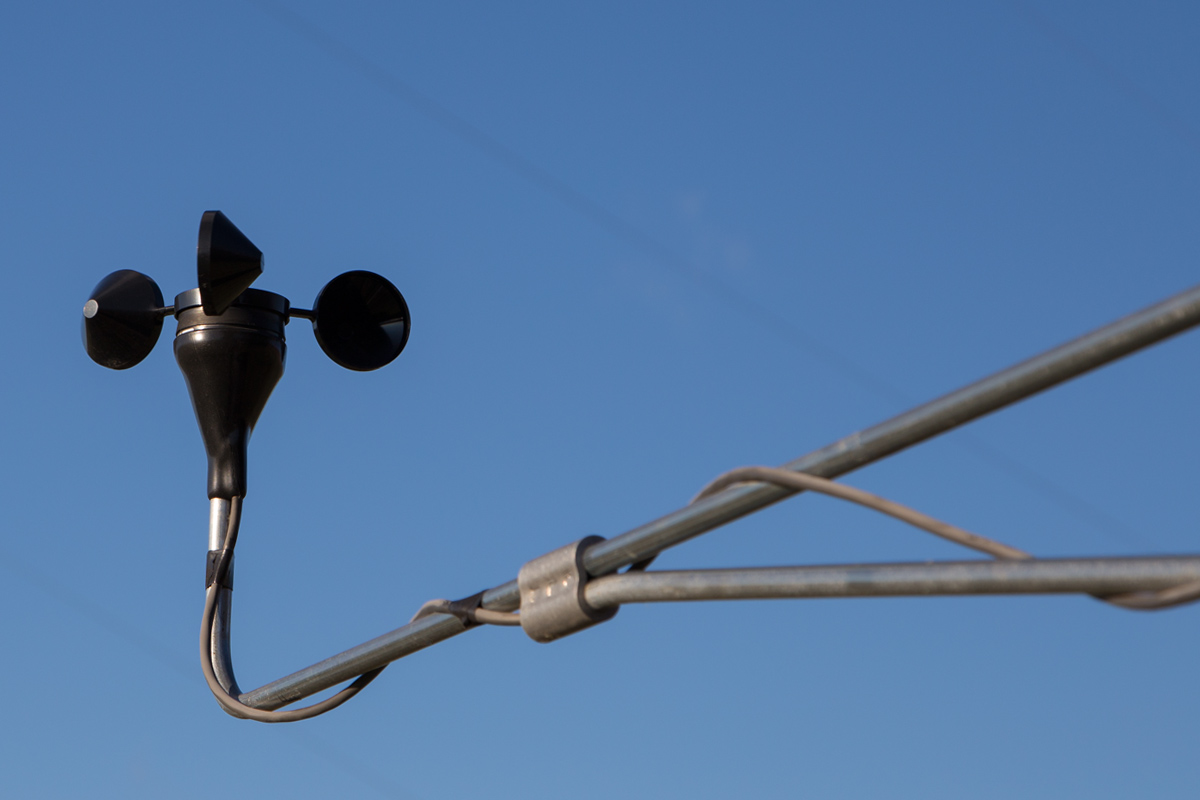The Duty of an Anemometer in Improving Safety And Security for Outdoor Activities
The Duty of an Anemometer in Improving Safety And Security for Outdoor Activities
Blog Article
Anemometers Unveiled: Recognizing Their Relevance in Environmental Surveillance and Precaution
The function of anemometers in ecological monitoring and safety and security measures is typically ignored, yet their significance is undeniable. These tools have a long background rooted in clinical query and technological developments, advancing to come to be necessary tools in different areas. From weather forecasting to air travel security, anemometers play an essential role in giving precise information that informs decision-making procedures and boosts general safety and security. Understanding the details of anemometers unveils a globe of important understandings that are fundamental to our understanding of the environment and the actions we require to make certain security.
History of Anemometers
The evolution of anemometers can be mapped back to the ancient civilizations where primary wind determining tools were first utilized. One of the earliest known anemometers was the hemispherical cup anemometer developed by Leon Battista Alberti in the 15th century.
In the 18th century, the distinguished researcher John Thomas Romney Robinson introduced the Robinson anemometer, which included four hemispherical mugs mounted on horizontal arms that prolonged from a central axis. This design came to be a criterion in meteorological measurements as a result of its precision and dependability. Over the years, developments in modern technology resulted in the growth of more modern anemometers, consisting of ultrasonic anemometers and laser Doppler anemometers, offering raised accuracy and effectiveness in gauging wind rate and direction. The background of anemometers showcases an impressive trip of innovation and development in the field of weather forecasting.
Kinds Of Anemometers
Throughout the field of weather forecasting, numerous kinds of anemometers have been established to properly determine wind rate and direction. Sonic anemometers make use of ultrasonic signals to gauge wind rate and direction accurately. Hot-wire anemometers run based on the concept that the cooling impact of wind on a warmed wire is symmetrical to the wind rate.
Applications in Meteorology
Having actually reviewed the various sorts of anemometers used in weather forecasting for measuring wind rate and instructions, it is vital to explore their sensible applications in the field. Anemometers play a critical role in meteorology by supplying real-time and accurate data on wind problems (anemometer). Meteorologists make use of anemometers to keep track of wind rate and direction to forecast climate patterns, issue warnings for extreme weather condition events like tornadoes, tornados, and cyclones, and assess weather for aviation safety and security
In weather forecasting, anemometers aid in comprehending regional and regional wind patterns, which are crucial for predicting weather changes and establishing climatic patterns. These devices are also made use of in research to examine microclimates, urban heat islands, and air pollution diffusion. In addition, anemometers are used in farming to enhance crop management methods, such as watering and chemical application, based on wind problems.
Relevance in Aeronautics Security
An important element of ensuring aviation safety and security exists in the careful surveillance of wind problems utilizing anemometers. Anemometers play a crucial duty in aviation by giving real-time data on wind rate and direction, assisting pilots in making informed decisions throughout flight, liftoff, and landing. Strong and unpredictable winds can dramatically impact airplane procedures, making it crucial for aeronautics authorities to count on accurate wind dimensions to guarantee the safety and security of guests and staff.

In the dynamic setting of aviation, where also minor changes in wind speed and instructions can have profound impacts, anemometers stand as crucial devices image source for promoting secure and secure air traveling.
Function in Environmental Research
Anemometers play an essential role in ecological research study by providing important data on wind speed and direction. By precisely measuring wind characteristics, anemometers assist scientists analyze the motion of toxins in the air, assess the impact of commercial exhausts, and forecast the spread of pollutants in the atmosphere.


Conclusion
To conclude, anemometers have played a critical duty in ecological surveillance and precaution. With an abundant background and numerous types readily available, these tools have actually been commonly utilized in meteorology, aeronautics safety, and ecological study. Recognizing the relevance of anemometers is necessary for properly gauging wind rate and instructions, which is important for predicting climate patterns, ensuring risk-free aeronautics operations, and conducting environmental researches - anemometer. Their contributions to these areas can not be underestimated.
One of the earliest recognized anemometers was the hemispherical mug anemometer invented by Leon Battista Alberti in the 15th century. Over the years, advancements in modern technology led to the development of more modern-day anemometers, consisting of ultrasonic anemometers and laser Doppler anemometers, offering increased accuracy and efficiency in determining wind speed and direction. Hot-wire anemometers run based on the principle that the cooling impact of wind on a warmed cable is symmetrical to the wind rate. Meteorologists utilize anemometers view it to monitor wind rate and direction to anticipate weather patterns, problem cautions for severe weather condition events like tornados, storms, and tornadoes, and analyze atmospheric conditions for aviation safety.
Understanding the relevance of anemometers is necessary for precisely gauging wind rate and direction, which is vital for predicting weather patterns, making certain risk-free air travel procedures, and carrying out ecological studies. (anemometer)
Report this page